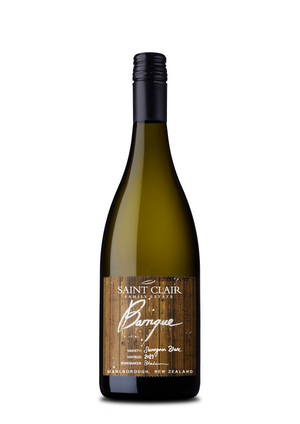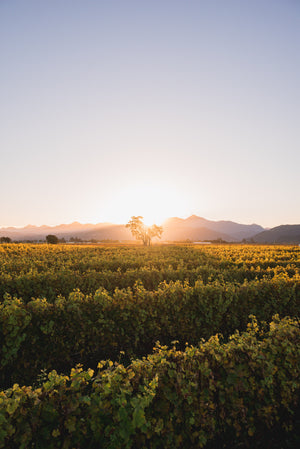On Tuesday 2nd July Saint Clair Winemaker and Viticulturist Hamish Clark led a group of Saint Clair staff out to visit a nearby estate vineyard to demonstrate how we prune our vineyards. This was an education session for those interested to learn about the pruning process and the importance of the next vintage and fruit quality.
The pruning season commences after harvest and generally once the vine has dropped all its leaves. It is considered one of the most important tasks of the year. There are many different ways a vineyard can be set up in terms of trellising and pruning but the predominant method here in Marlborough is on two to four cane “Vertical Shoot Position” (VSP). (Pictured: 2 cane VSP pruned vine)

Pruning for this method involves cutting the existing wrapped cane (cordon), removal of this and its associated shoots, selection and wrapping new healthy canes on the wires then pruning and removal of any shoots that are not wrapped. If the canes are not thick enough or are damaged this could affect the growth for the next crop and the vines may not produce to their full potential.
As the vines get older the head of the vine (at the top of the trunk) gets bigger and bigger. The head size eventually needs to be reduced back in size as the wider it gets the shorter the length of the cane that can be wrapped and therefore the number of buds laid. The pruners are always looking to create suitable options for the following year to aid in keeping the head compact and at the correct height by spur pruning (cutting the cane back to a single bud) any shoots under the head, especially if the head is needing to be cut back to size next season.
Our viticulturist and contractors need to be able to estimate vineyard yields for the following year through calculations which include the number of rows, vine spacing, number of canes and number of buds per cane. The buds produce a shoot which will produce fruit clusters. The seasons weather dictates exactly how fruitful the vine will be with weather conditions at flowering being the biggest determinant of yield.
There are many things to consider when choosing the cane as well as its health. It must be facing the right direction and must be close to the trunk to keep fruit in the ‘fruiting zone’. Each vine is treated differently and although it is not complicated, it does require an understanding of the vine, how it behaves and the impact upon the vine both in the current year and the year after. All winter long, it is a race against Mother Nature’s clock to finish.
The first step, as with any pruning, is to understand the plant’s growth cycle. Grapes have a rapid rush of leafy growth in spring, growing as much as a centimeter per day. Within two months, flowers appear, and fruit is set on the new growth.
After that, the plant’s energy, trapped from the sun by the large leaves, goes towards creating sugars to ripen the fruit and starches to create the vine’s long-term woody framework. This woody growth is where the vine stores energy during the dormant winter period.
On a newly planted vineyard, the first few years is about growing the young vine up to the first fruiting wire. Once established and a good cane is wrapped down, the focus turns to producing fruit.
After about three years, the basic structure will be in place with at least 2 canes wrapped down. Viticultural practices from this point include wire lifting to support the shoots/canopy in an upright position, fruit thinning to a desired Kg/plant or per Ha equivalent, shoot thinning to improve airflow, leaf plucking to increase sun exposure and allow better penetration of protective sprays, trimming top and sides to stop the canopy sprawling out and impeding operations.
Thinning is not essential, but creates larger, better-quality fruit. For maximum flavour, hope for hot, dry autumn.
About 50 million grapevines in Marlborough will be pruned by hand over these important months.
An informative and educational session from Hamish from which many of the team learnt a lot. We now have a better appreciation for the process of vineyard pruning and the importance for not only the current year but the year ahead for the vine yield and fruit quality.


